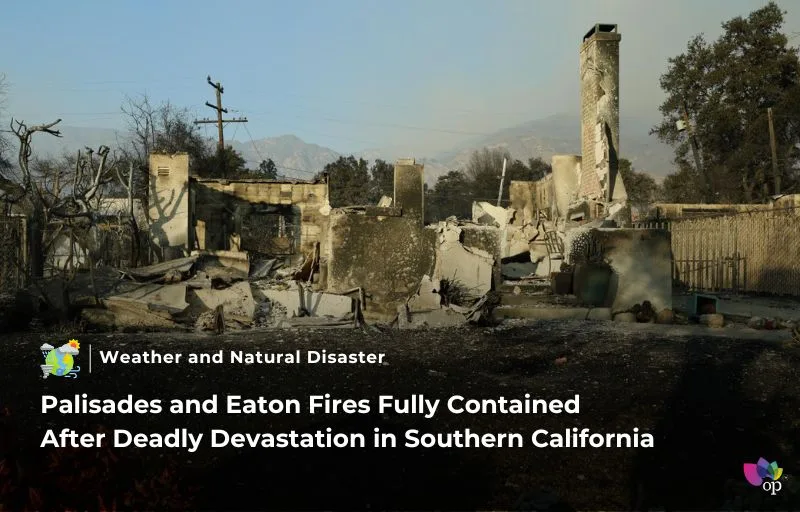According to the reports on Saturday (1 February), the Palisades and Eaton fires, which erupted over three weeks ago in Southern California, have been fully contained, according to Cal Fire. The Palisades Fire ignited on January 7 in Pacific Palisades, east of Malibu, and rapidly expanded due to dry weather. That same evening, the Eaton Fire broke out in the foothills of Angeles National Forest, where strong winds fueled its spread into Altadena. The fires devastated entire communities, leaving thousands without homes.
At least 29 people lost their lives—17 in the Eaton Fire and 12 in the Palisades Fire—while thousands of structures were destroyed. The Palisades Fire burned 23,448 acres and damaged or destroyed nearly 8,000 buildings. The Eaton Fire, covering 14,021 acres, wreaked havoc in the San Gabriel Valley foothills, particularly in Altadena, a historically Black professional and artistic community. Many architectural landmarks, including the Andrew McNally House and Zane Grey Estate, were among the losses.
The fires were driven by extreme drought conditions and powerful offshore winds, creating what the National Weather Service described as “about as bad as it gets” for fire weather. Officials had warned of a “particularly dangerous situation” just a day before the fires started. Despite efforts by firefighters and state personnel deployed by Governor Gavin Newsom, the flames overwhelmed containment attempts. Smaller fires, such as the Sunset Fire in Hollywood Hills, were extinguished, but the two major blazes remained uncontrollable.
A rare storm provided relief as rain fell across Southern California for the first time in nearly eight months. Firefighters credited the rainfall with significantly reducing fire potential and aiding containment efforts. While the fires are now under control, investigations into their causes continue as affected communities begin the long process of recovery and rebuilding.
References


